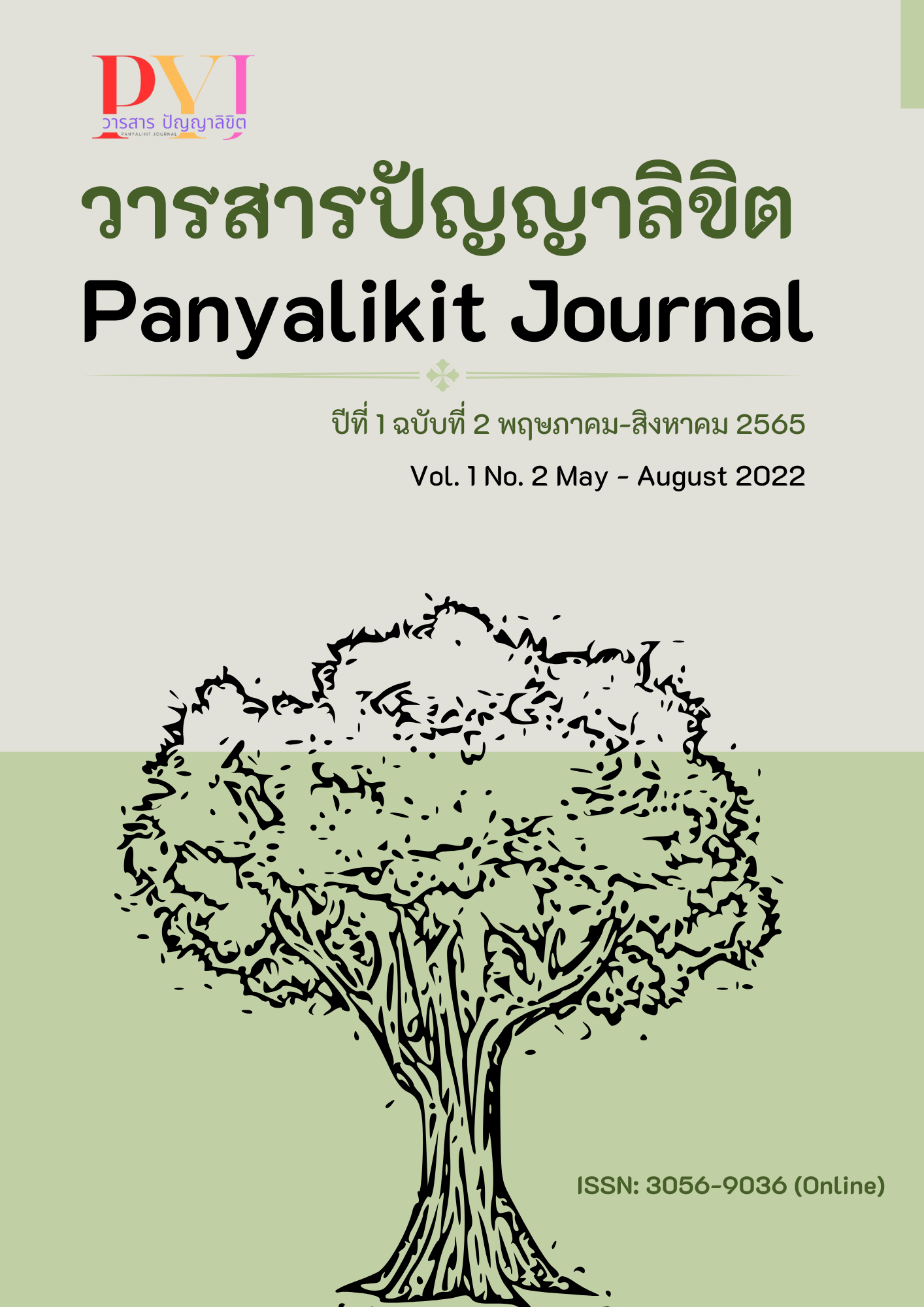Air Pollution Process Management of The Thai Modern Era in Chiang Mai Province
Main Article Content
Abstract
The objectives of this research are: 1) to study problems relating to the process management of air pollution in the Thai modern era in Chiang Mai province 2) to study and analyze the process management affecting efficiency and effectiveness of air pollution in the Thai modern era in Chiang Mai province 3) to study the level of process management of air pollution in the Thai modern era in Chiang Mai Province. This research applied quantitative research method. The sample used in this research was 400 people in Chiang Mai province. The research tool was a questionnaire created by studying literatures and relevant researches along with using the tools for collecting data from the sample which covered the contents and objectives of the study. The statistically analyzed variables were used to create a questionnaire for collecting data with the informants to gain insights.
The research found that: The weighted average of the operation process management in all four aspects was 3.05. The S.D. value was 0.89, which was considered moderate. Communication, Knowledge-providing process, and Practice were the top three factors with the highest weighted average, with mean values of 3.10, 3.08, and 3.03. All of which were considered moderate, with S.D. values of 0.99, 0.97, and 0.84, respectively. Support had the lowest weighted average, 3.02, with an S.D. value of 0.74, which was considered moderate.
The weighted average of process management efficiency in all three aspects was 3.06. The S.D. was 0.87, which was considered moderate. Comprehensiveness and Result were the first two factors with the highest weighted average, with mean values of 3.11 and 3.10. All of which were considered high and moderate, with S.D. values of 0.87 and 0.82, respectively. Understanding had the lowest weighted average, 2.98, with an S.D. value of 0.88, which was considered moderate.
The levels of air pollution process management in all 5 aspects had a weighted average of 3.07 with an S.D. value of 0.92, which was considered moderate. Environment had the highest weighted average, which was 3.11 with an S.D. value of 0.94, which was considered high, followed by Participation with an average weight of 3.09, with an S.D. value of 0.94, which was considered moderate, Technology with a weighted average of 3.08 with an S.D. value of 0.94, which was considered moderate. and Social condition with a weighted average of 3.06 with an S.D. value of 0.88, respectively. Government had the lowest weighted average, 3.05 with an S.D. value of 0.90, which was considered moderate.
Article Details
References
กัลยา วานิชย์บัญชา. (2560). การใช้ SPSS for Windows ในการวิเคราะห์ข้อมูล. กรุงเทพฯ: สามลดา.
เกษวรางค์ ลีลาสิทธิกุล และคณะ. (2561). ผลจากหมอกควันและมลพิษทางอากาศต่อระบบหัวใจและทางเดิน หายใจ ในพื้นที่ภาคเหนือของประเทศไทย. ธรรมศาสตร์เวชสาร, 18(3), 339-348.
ขนิษฐา ชัยรัตนาวรรณ. (2563). แหล่งกำเนิด ผลกระทบและแนวทางจัดการฝุ่นละออง PM 2.5 บริเวณภาคเหนือของประเทศไทย. วารสารสมาคมนักวิจัย, 25(1), 461-474.
ณัฐชยา อุ่นทองดี. (2556). การมีส่วนร่วมของประชาชนในการป้องกันและแก้ไขมลพิษทางอากาศจากหมอกควันในจังหวัดแม่ฮ่องสอน (วิทยานิพนธ์วิทยาศาสตรมหาบัณฑิต). สถาบันบัณฑิตพัฒนบริหารศาสตร์.
ภัคพงศ์ พจนารถ. (2559). สถานการณ์ของปัญหามลพิษทางอากาศที่เกิดในเมืองใหญ่ของประเทศไทย: กรณีศึกษา กรุงเทพมหานคร เชียงใหม่ และ ระยอง. Journal of Environmental Management, 12(1), 114–133.
โยษิตา หลวงสุรินทร์ และธัศฐ์ชาพัฒน์ ยุกตานนท์. (2564). การบริหารจัดการการเรียนออนไลน์ กรณีศึกษา: มหาวิทยาลัยราชภัฎอุดรธานี. วารสารร่มพฤกษ์ มหาวิทยาลัยเกริก, 39(1), 125-140.
รสสุคนธ์ วงค์แสนคำ. (2550). การจัดการมลพิษทางอากาศของผู้มีส่วนได้ส่วนเสียในอำเภอเมือง จังหวัดเชียงใหม่. เชียงใหม่: มหาวิทยาลัยเชียงใหม่.
สำนักงานจังหวัดเชียงใหม่. (2564). บรรยายสรุปจังหวัดเชียงใหม่. เชียงใหม่: กลุ่มงานยุทธศาสตร์และข้อมูลเพื่อการพัฒนาจังหวัด.
สุดจิต ครุจิต. (2561). แนวทางการจัดการคุณภาพอากาศสำหรับโรงงานขนาดกลางและขนาดเล็กตามแนวคิด อุตสาหกรรมสีเขียว (รายงานการวิจัย). มหาวิทยาลัยเทคโนโลยีสุรนารี.
Yamane, T. (1973). Statistics: An Introductory Analysis. 3rd Edition. New York: Harper and Row.

